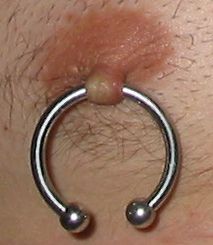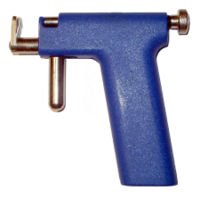
A nipple piercing is a piercing, centered usually at the base of the nipple. A nipple piercing typically takes 3-6 months to fully heal.
Jewelry rejection
The nipple is fleshy enough to pierce securely behind plenty of skin to prevent rejection. However, if the jewelry gauge is too thin or the piercing isn't deep enough to begin with, there is a risk of rejection. Metal allergies could cause it to reject. Problems with infection and/or too much tugging and pulling on it could also cause it to reject.
Nipple piercing and breastfeeding
There is a common question among women who consider nipple piercings, and that question is how it may affect breastfeeding. There is no evidence that proper nipple piercings cause any complications with lactation. However, it is recommended that good care is taken to prevent infection by using a piercing professional and good body piercing aftercare. Frequent re-piercings can also damage the nipple and cause complications. It is also recommended that the piercing be healed before breastfeeding. Most body piercing professionals will refuse to pierce a pregnant woman for this reason, and because piercing causes unnecessary stress on the body that could potentially complicate a pregnancy.
Several complications have been noted involving breastfeeding with a piercing present, so it is recommended to remove nipple jewelry before nursing.
Several women who do not remove nipple jewelry before nursing observe the following problems:
Poor latch
Babies frequently coming on and off the breast
Slurping
Gagging
Milk leaking from the baby's mouth
It is also a potential choking hazard for the baby. As the baby sucks, the jewelry could come loose and lodge in the throat. The baby's gums and tongue as well as the soft and hard palate could be injured by the jewelry





